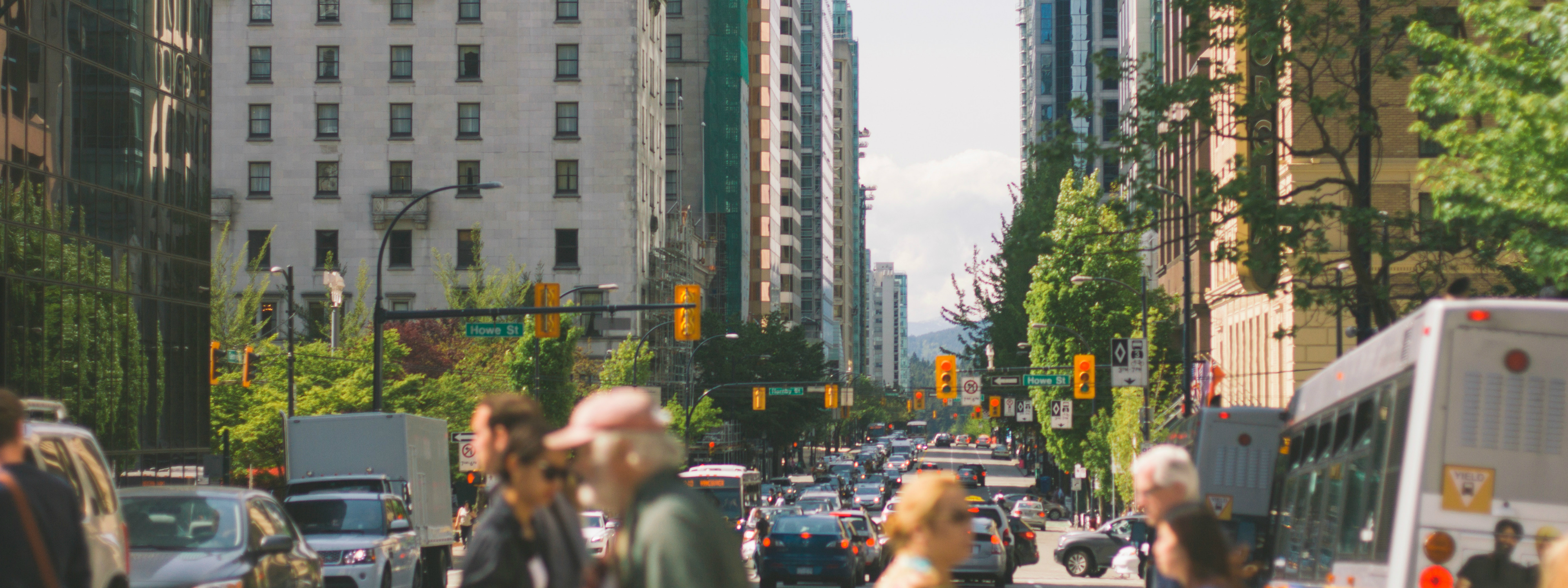Compendium of Best Urban Forest Management Practices
Chapter 1. Definition of Urban Forests
Return to the Compendium homepage here:
Compendium of Best Urban Forest Management Practices →

Compendium of Best Urban Forest Management Practices
Return to the Compendium homepage here:
Compendium of Best Urban Forest Management Practices →
What comes to mind when we think of an urban forest? Trees in containers on sidewalks? Forests in ravines? Backyard trees on lot lines? In 1974 Jorgensen defined the term urban forestry as “a specialized branch of forestry and [it] has in its objectives the cultivation and management of trees for their present and potential contribution to the physiological, sociological and economic well-being of urban society. These contributions include the overall ameliorating effect of trees on their environment, as well as their recreational and general amenity value.
Deneke (1993) expanded on the term: “Urban forestry is the sustained planning, planting, protection, maintenance, and care of trees, forests, greenspace and related resources in and around cities and communities for economic, environmental, social, and public health benefits for people. The definition includes retaining trees and forest cover as urban populations expand into surrounding rural areas and restoring critical parts of the urban environment after construction. Expansion at the urban/rural interface raises environmental and public health safety concerns, as well as opportunities to create educational and environmental links between urban people and nature. In addition, urban and community forestry includes the development of citizen involvement and support for investments in long-term on-going tree planting, protection, and care programs.”
Over the years, many other definitions have been proposed, however they all recognize that the urban forest does not stop at the city limits. Urban forestry embraces the management of trees as well as the associated biotic and abiotic components in small communities and the interstitial areas between. If the traditional view of forestry focuses on the sustained production of forest products and ecological services in a wildland context then urban forestry focuses on the provision of a wide array of economic, environments and social services to urban society.
The 2019-2024 Canadian Urban Forest Strategy (CUFS) defines urban forests as the “trees, forests, greenspace and related abiotic, biotic and cultural components in areas extending from the urban core to the urban-rural fringe.” The CUFS defines urban forestry as “the sustained planning, planting, protection, maintenance, management and care of trees, forests, greenspace along with related resources in and around cities as well as communities for economic, environmental, social, and public health benefits for people. Urban forests are trees, forests, greenspace and related abiotic, biotic and cultural components in areas extending from the urban core to the urban-rural fringe.” This definition of urban forestry includes “techniques associated with retaining trees in the context of densification; forest cover in the context of urban expansion into surrounding rural areas, and greening critical parts of the urban environment after development and urbanization.”
As the CUFS notes, as “the geographic and social distinctions between urban and rural become less clear, urbanization raises environmental and public health and safety concerns, thereby creating a need for educational and environmental links between urban people and nature. Urban forestry is multidisciplinary and multifaceted, comprised of many actors in research, policy, practice, and community engagement. Urban forestry includes the development of citizen involvement and support for investments in long-term on-going tree planting, protection, and care programs.”
Jorgensen, E. (1974). Towards an urban forestry concept. Proceedings of the 10th Commonwealth Forestry Conference. Ottawa, Canada; Forestry Service.
Deneke, F. (1993). Urban Forestry in North America: Towards a Global Ecosystem Perspective. pp 4-8. In G. Blouin & R. Comeau (Eds.), Proceedings of the First Canadian Urban Forests Conference May 30- June 2, 1993. Winnipeg MB. 151 pp.
Tree Canada. (n.d.). Canadian Urban Forest Strategy: 2019-2024. Retrieved from https://treecanada.ca/wp-content/uploads/2018/10/TC-CUFS-2019-2024-Eng-1.pdf
Navigation